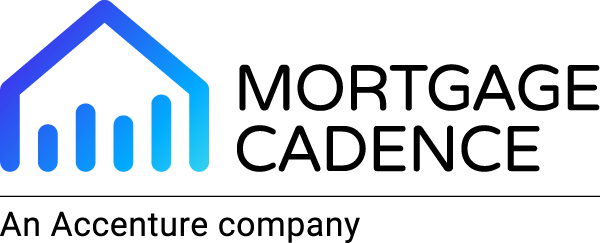We
identified a serious industry problem as a result of studying the performance
of our customers over the past eight years through our annual mortgage
performance benchmarking study. While our clients have access to great people
and the latest technology, something was still missing. There is a problem with
our process.
Lenders
participating in our annual study, most of whom consistently perform better
than the lenders studied by the Mortgage Bankers Association, have reported
that inefficient processes are slowing down the loan origination process and
it’s taking too long to close. Everyone agrees that the mortgage lending
process needs improvement, but this hits the industry where it hurts.
Even
so, this is not a new problem. What we needed was a new approach to a solution.
A new approach
Traditionally,
the industry has worked to re-engineer our processes to increase efficiencies
during loan manufacturing. For a variety of reasons that has met with limited
success. We needed to find a new way to look at the process.
Our Vice President of Marketing, Pamela Herrmann, found it in Design Thinking. She found it when she met Professor Jeannie Liedtka of the University of Virginia’s Darden School of Business.
Liedtka was
formerly chief learning officer at United Technologies Corporation, where she
was responsible for overseeing all activities associated with corporate
learning and development for the Fortune 50 corporation, including executive
education, career development processes, employer-sponsored education and
learning portal and web-based activities.
At Darden, she is
the former associate dean of the MBA program and works with both MBAs and
executives in the areas of design thinking, innovation and leading growth. She
has been studying and writing about design thinking for years. Writing
last fall in the Harvard Business Review,
Liedtka said:
“In a recent seven-year study in which I looked in
depth at 50 projects from a range of sectors, including business, health care,
and social services, I have seen that another social technology, design
thinking, has the potential to do for innovation exactly what TQM did for
manufacturing: unleash people’s full creative energies, win their commitment,
and radically improve processes.”
After
explaining the plight of the mortgage industry to the professor, Herrmann accepted
an introduction by professor Liedtka to bring an executive team to meet with
her current class of MBA students for an experiment in design thinking.
Under the microscope and into the
process
Herrmann
and a team of Mortgage Cadence executives went to work with Professor Liedtka’s
class of MBA students. They explained the mortgage process to them and answered
their questions. They also gave students access to other industry subject
matter experts who could shed additional light on our process.
After
an extensive information gathering period, the students put what they had
learned through the design thinking process.
Design thinking has been defined as a non-linear, iterative process intended to allow diverse groups to tackle problems that are ill-defined or unknown. It consists of 5 phases: Empathize, Define, Ideate, Prototype and Test.
Over
the course of a 4-week program, MBA students from the Darden School put the
current mortgage process through this process and came back to the Mortgage
Cadence executive team with a definition of the problem and a number of
potential solutions.
An outside view of our industry
Mortgage
Cadence executives sat with the student team and listened to them explain what
they had learned about the current state of the mortgage origination business
and why they felt productivity and efficiency were both so low. In the process,
they were surprised and pleased at how observant the students had been and how
perceptive they were.
“The
students got it,” said Dan Green, EVP, Marketing Mortgage Cadence. “They
identified the right problems. Unfortunately, these are the same problems that
the industry has been facing since I was a mortgage lender nearly two decades
ago.”
After
spending a number of weeks observing the mortgage business and interviewing
industry experts, the students came away with a number of conclusions.
- There is no transparency among roles in the mortgage lending process. What happens in one department is basically a secret to those working in other areas.
- People working in different roles do not understand what other roles need for different loans. Since they don’t know what the next person needs, they often don’t provide it.
- Loans are constantly moving back upstream for additional buyer outreach because prior roles were not familiar with the loan underwriting process.
- The loan officer is the most critical person in the process.
- Buyers are not aware of the status of their loan and are frustrated when contacted multiple times for additional data. Multiple points of contact in the process confuse buyers on how and to whom they should respond.
- Data collection from the buyer is difficult and convoluted but a vital part of the process.
- Constantly changing regulations create pain points that may not be obvious until the loan fails to sell.
- Ease of use and simplicity are the keys throughout the loan process, but they seem difficult or impossible to deliver.
- Appraisals are outsourced, leading to a lack of consistency in the time it takes to complete the process.
Instead
of dealing with the inefficiencies in the origination process, the industry has
simply layered technology onto the broken process. Automation did not create a
better process, it just made the industry better and faster at implementing the
broken one. The students picked up on this.
Anyone
working in our industry for more than a year will see the truth in all of the
observations these students made. Many, if not all of these problems, have
plagued the industry for some time.
Next,
we asked the students what they would do to solve these problems.
Recommendations from tomorrow’s
leaders
The
students returned what they called a “napkin pitch” full of ideas they felt
would improve the mortgage process. Some of the solutions related to best
practices approaches to the process that they felt -- and we agree -- the
industry should be following. These included:
Recognizing LO Customer Service leaders. By creating a loan officer Customer Service Leaderboard, lenders can recognize the highest performing loan officers for customer service and shift the paradigm from “output- focused” rankings to “service-focused” rankings.
Rewarding LOs for supporting the underwriting department. This monthly award would recognize one loan officer who went above and beyond the call of duty to help facilitate the movement of loans through the underwriting process. The loan officer would be nominated by processors and underwriters and selected by management. This would allow lenders to focus team attention on smoothing the difficult lending process.
Employee role rotation. Employees tend to disconnect when they encounter a task they feel is someone else's responsibility. That risk is mitigated if the employee may actually be responsible for that task in the future. By cross-training and moving people around, everyone knows what’s involved in all aspects of the loan origination process.
Creating an employee evaluation matrix. Lenders should have access to a comprehensive evaluation matrix for performance reviews that includes: Numeric KPI objectives, like loan velocity; organizational agility; 360-degree feedback; and learning objectives. The process links LO performance to KPIs for better overall performance.
The
other potential solutions were technology-based. We were very pleased to find
that virtually all of the solutions they suggested in this area mirrored
initiatives already underway within Mortgage Cadence. Their suggestions
included:
A Pipeline Visualization tool that can provide a snapshot of the loan status for all loans being processed by a team at any given time. The tool would provide current status, loan type, date of application, date since last contact with the customer, and the number of new regulatory changes affecting each loan (classified by loan type).
Create a Client Communication Center. Consumers view the mortgage process like a black box. Worse, they cannot always get answers from their loan officers. By opening a direct channel of communication through which clients can comfortably ask questions and receive updates enables greater transparency and helps build deeper relationships between borrowers and the lender.
Provide automatic status updates. Add functionality that would automatically produce weekly alerts on the mortgage lending process from within the loan origination system. The alerts would include a graphic or icon to provide at-a-glance updates on complicated process steps. Updates would highlight process changes, regulatory changes, reminders on next steps and loan status. This is mostly for internal use.
Develop a consumer-facing Mortgage GPS. Borrowers never feel like they know where they are in the loan origination process so they are constantly contacting the lender for more information. When they don’t get it, they become frustrated. Lenders should offer the consumers a tool that provides information about where their loan is in the process, as well as what is expected to happen to their loan at the step, how long it is expected to be in each step, who they can contact at each step if follow-up is required, and what steps are next as well as what has already been completed.
Create DocULoad, a cellphone scanning application. It is hard for mortgage clients to scan all documents and for financial institutions to keep track of those documents once received, especially if they come in different formats (email, fax, snail mail). Lenders should use OCR (Optical character recognition) software to convert document images to text and then store that data within the Mortgage Cadence Platform.
Create Appraiser Speed-Dial. Borrowers have limited insight into the property appraisal process, which puts the lender under pressure to see that the process happens smoothly. A tech-tool like Speed-Dial could connect the homeowner and the appraiser so the customer can better understand the value the appraiser brings and what to expect during an appraisal. In this way, the consumer becomes part of the process, which gives them more control over when, how and by whom the appraisal is performed.
Current
Mortgage Cadence customers know that the technology innovations identified by
the students are already in the process of becoming reality here at Mortgage
Cadence. For more information about our timelines and development path, reach
out to your account manager.
In the end, it was very gratifying that an objective view into our process turned up previously identified problems as well as solutions that track with development currently underway at Mortgage Cadence. For more information about how we’re baking process best practices into next generation mortgage technology to finally allow loan originators to create efficient processes, don't hesitate to reach out.



